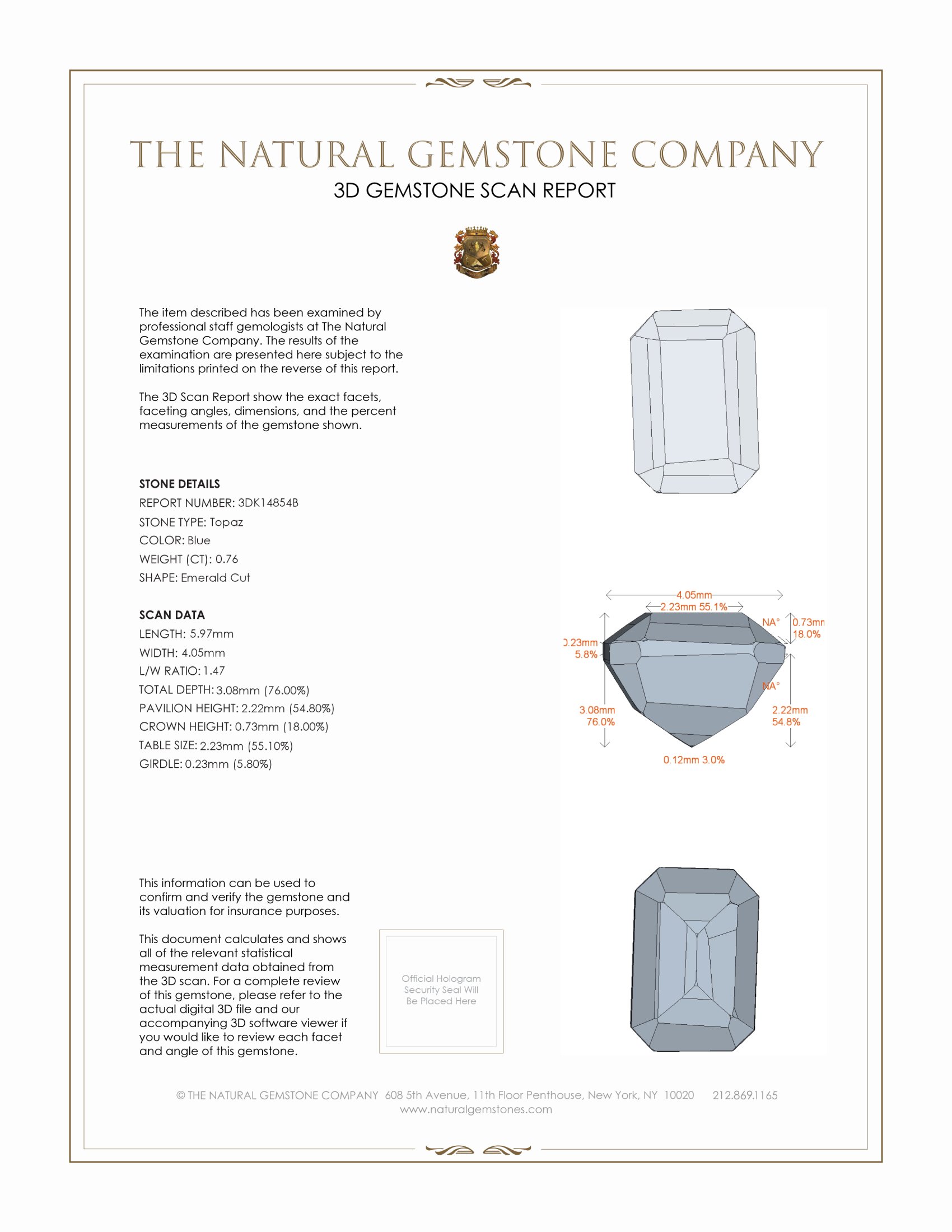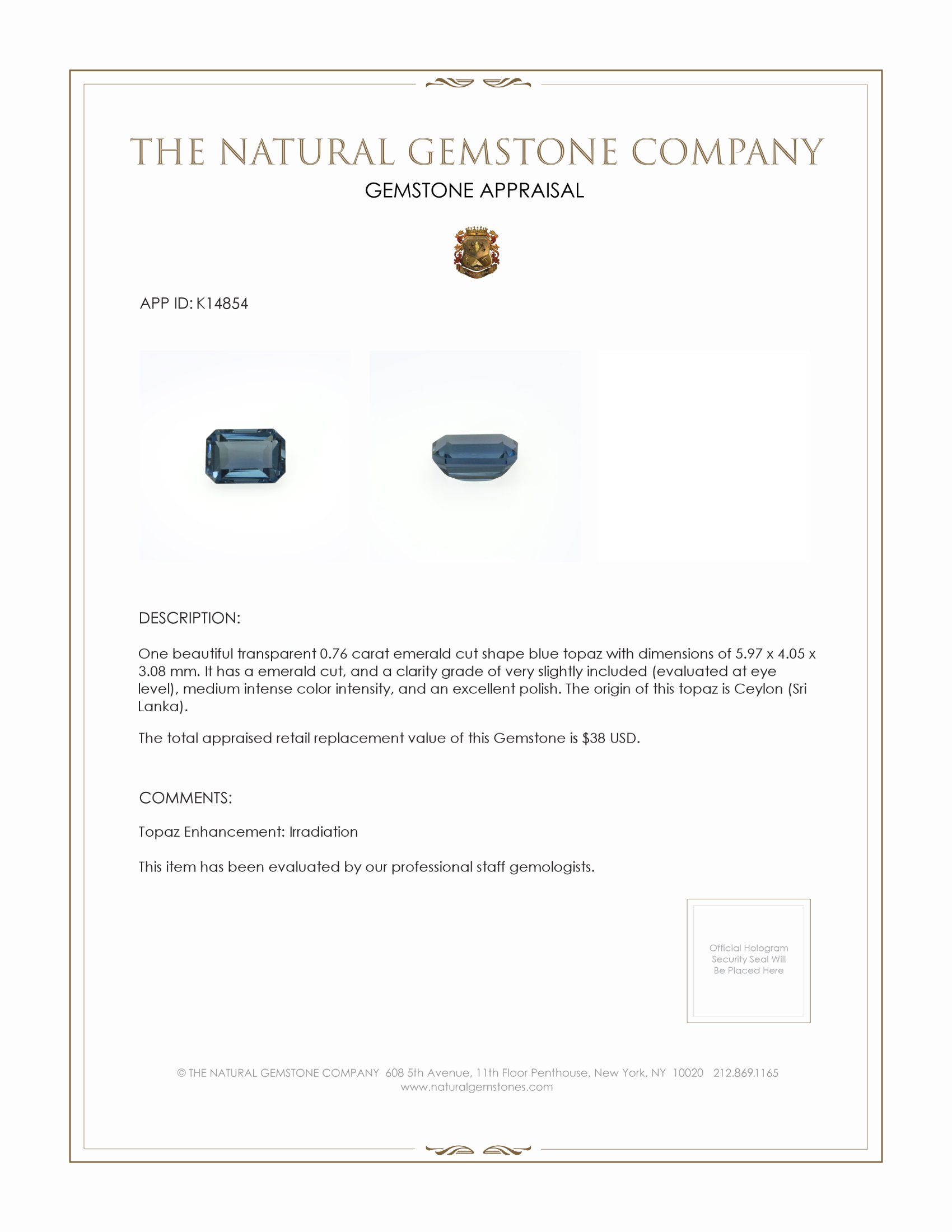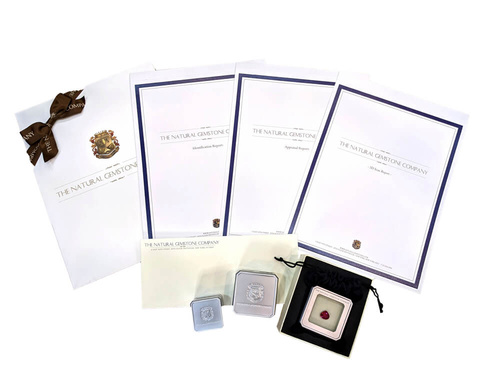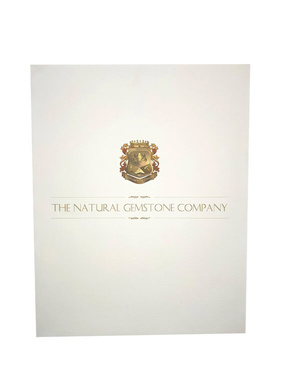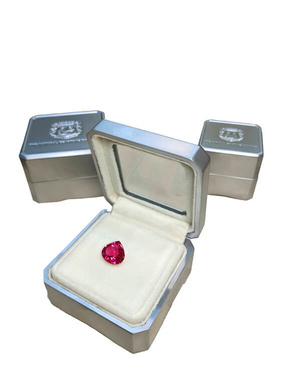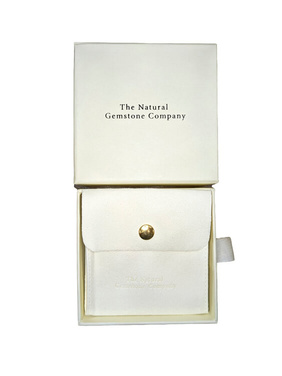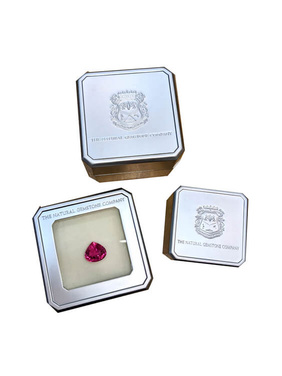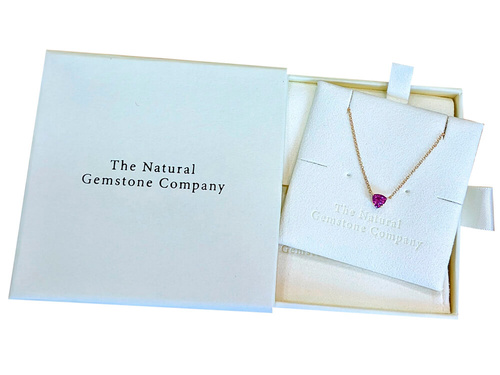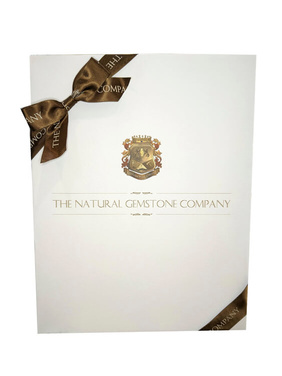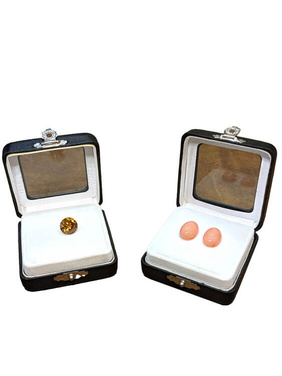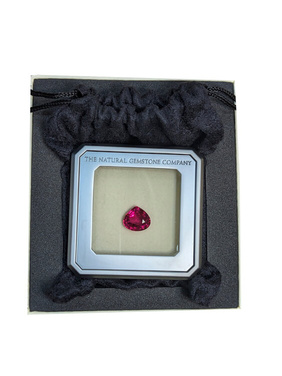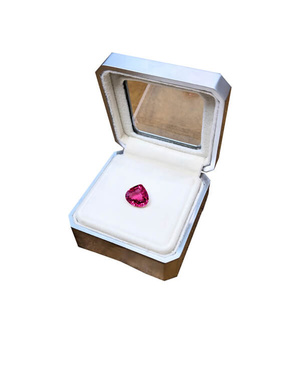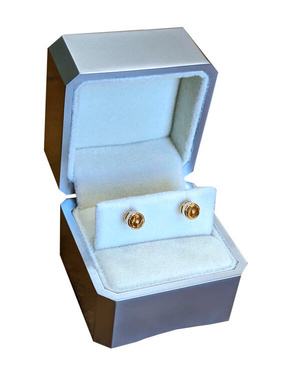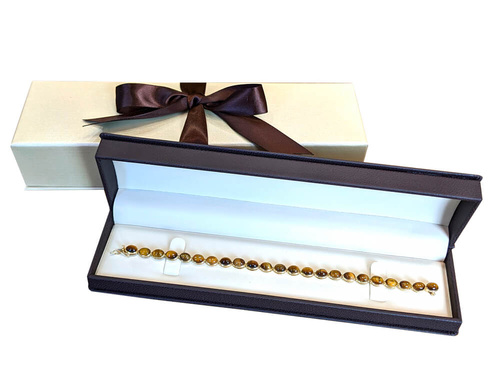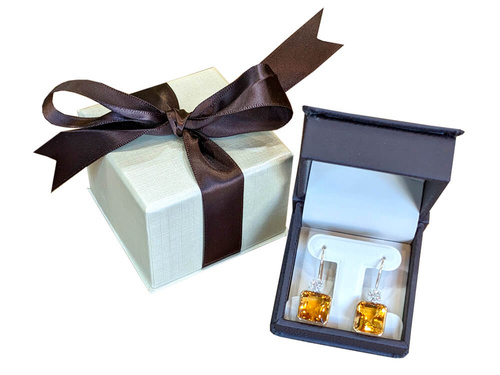- Stone7
- Reports3
-emeraldcut-blue-topaz-0.7600-cts-k14854-1.jpg?d=200x200&v=20250626045440)
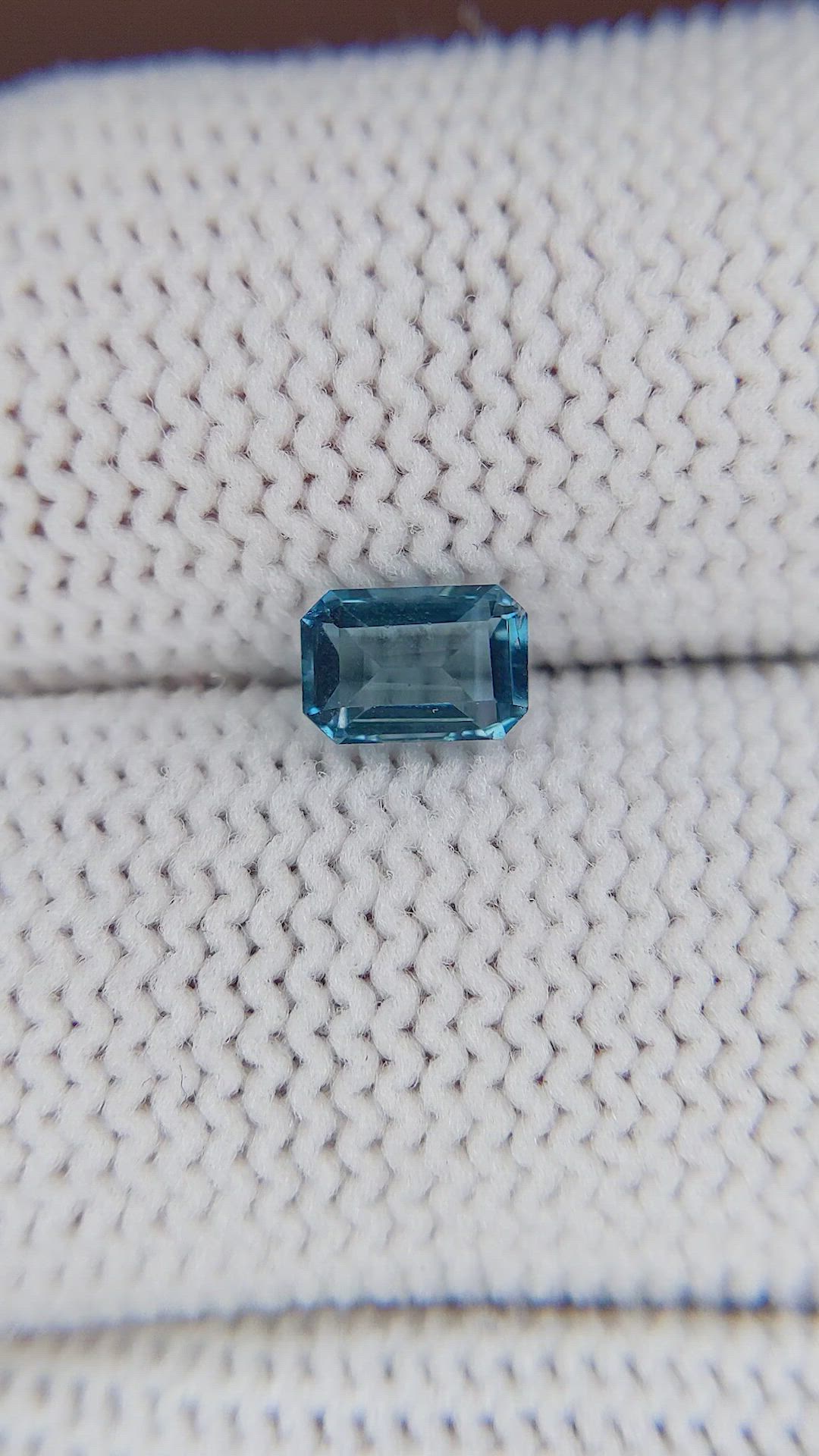
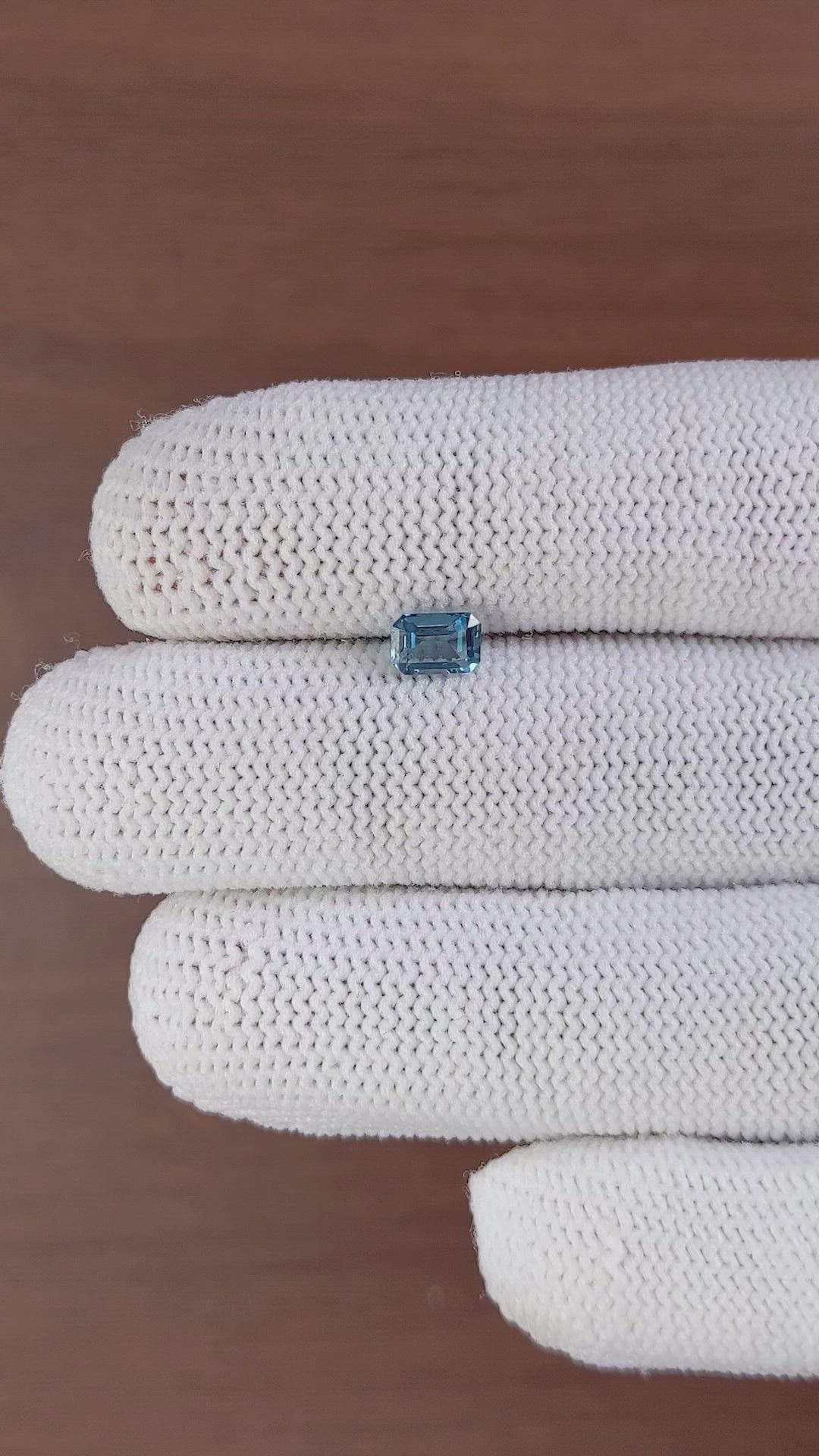

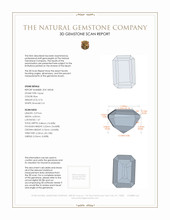
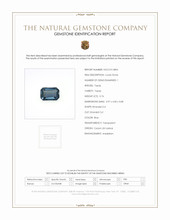
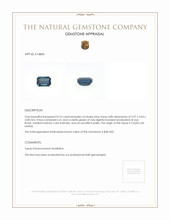
0.76 Ct. Topaz from Ceylon (Sri Lanka)
This loose stone ships by Nov 8
Item ID: | K14854 |
|---|---|
Dimensions (MM): help | Length: 5.97 Width: 4.05 Height: 3.08 |
Weight: | 0.76 Ct. |
Color: help | Blue |
Color intensity: help | Medium Intense |
Clarity: help | Very Slightly Included |
Shape: help | Emerald Cut |
Cut: | Emerald Cut |
Cutting style: | Faceted |
Enhancements: help | Irradiation |
Origin: help | Ceylon (Sri Lanka) |
Per carat price: help | $50 |
This transparent blue topaz from Ceylon presented by The Natural Gemstone Company is a precisely executed 0.76 carat emerald cut specimen, with dimensions of 5.97 x 4.05 x 3.08 mm. The stone displays an emerald cut silhouette, characterized by parallel step facets and a broad rectangular table, delivering a planar, architectural light return distinct from brilliant cuts. Clarity is graded as very slightly included, evaluated at eye level, signaling that the stone is effectively clean to casual observation, with only small inclusions evident under careful inspection. Color is medium intense in its saturation, producing a stable and pleasing blue that reads neither overly dark nor washed out, and polish is graded excellent, indicating that facet junctions are crisp, facet planes are smooth, and the surface finish maximizes optical performance. The color enhancement is by irradiation, a standard and stable treatment for blue topaz, and the origin of the rough is Ceylon Sri Lanka, a provenance that contributes both geological interest and market desirability.
From a cutting and proportion perspective this emerald cut topaz is engineered to balance step facet geometry with proportional depth for optimum face up color and light transmission. The length to width ratio is approximately one point four seven to one based on the five point nine seven millimeter length and four point zero five millimeter width, a ratio that preserves the elegant rectangle expected of classic emerald cuts without stretching the color. Total depth measures three point zero eight millimeters, which corresponds to a depth percentage of roughly sixty one point five percent when calculated against the average of length and width. This depth allows the pavilion step facets to develop sufficient internal reflections, while the broad table provides a stable window into the body color. The cutter has employed traditional emerald cut conventions, with a large central table, elongated crown facets that control brilliance, and graduated pavilion steps that avoid excessive light leakage. Facet symmetry is precise, resulting in balanced light return across the table and well aligned facet junctions, and the excellent polish enhances the stone s apparent brightness by reducing microabrasion and surface diffraction.
Color and inclusion characteristics merit specific technical attention for informed buyers. The medium intense blue results from color centers generated by irradiation and fixed by subsequent thermal treatment, producing a hue distribution that is even across the stone s body and resistant to routine light and temperature conditions encountered in jewelry wear. The term very slightly included at eye level denotes that inclusions are small, infrequent, and typically positioned near the pavilion or along cleavage planes, so they do not interrupt the primary plane of view through the table. These inclusions may consist of minute crystals, healed fissures, or fine needles, consistent with typically formed topaz. Because topaz has a distinct cleavage along one crystallographic direction, the cutter s approach emphasizes facet placement and girdle integrity to protect against cleavage risks during setting. The excellent polish and precise facet junctions further mitigate the visual impact of any inclusions by ensuring uniform reflection and refraction across the stone. For gemmological stability, irradiated blue topaz from reputable sources such as this Ceylon piece demonstrates long term color retention, provided it is not exposed to extreme heat treatments beyond those used in standard jewelry repair.
The narrative of origin and formation gives depth to both the material and the market appeal of this gem. Blue topaz begins its geological journey in volatile rich, silica saturated magmatic systems, often in late stage pneumatolytic and hydrothermal environments associated with granitic pegmatites and rhyolitic cavities. In such settings hydrothermal fluids enriched in fluorine and aluminum circulate through fissures and vesicles, promoting the crystallization of aluminium silicate phases including topaz. Over millions of years pressure and temperature conditions foster slow crystalline growth, allowing well formed prismatic habits with distinct cleavage planes to develop. In the case of this Sri Lankan specimen, the island s complex metamorphic and igneous history provided the ideal interplay of heat, fluid chemistry, and host rock cavities for topaz formation, followed by geological uplift and erosion that liberated the crystals for eventual recovery. Natural radiation from trace radioactive elements in adjacent minerals can create color centers in colourless topaz, and controlled laboratory irradiation followed by calibrated heating stabilizes and enhances the blue hue seen in this stone. The combination of geological time scales, precise structural chemistry, and human guided enhancement results in a gem that carries both a chronicle of deep time and the visible evidence of careful lapidary craftsmanship.
As a specimen available through The Natural Gemstone Company this emerald cut blue topaz exemplifies the convergence of geological provenance, cutting discipline, and gemmological transparency. The dimensions and proportioning favor compatibility with classic three stone and solitaire settings, while the very slightly included clarity and excellent polish assure confident setting and everyday wear. The medium intense blue is well suited to designs that aim for a strong yet wearable color statement, and the irradiation enhancement applied is a stable industry standard that has been documented and disclosed. For collectors and designers who prioritize technical specification the combination of a one point four seven to one length to width ratio, a depth percentage near sixty one point five percent, precise step facet geometry, and a Ceylon origin makes this topaz a measured and reliable choice. The Natural Gemstone Company provides full disclosure on treatment and origin, and we are prepared to supply additional technical documentation and high resolution imagery upon request to support appraisal and setting decisions.

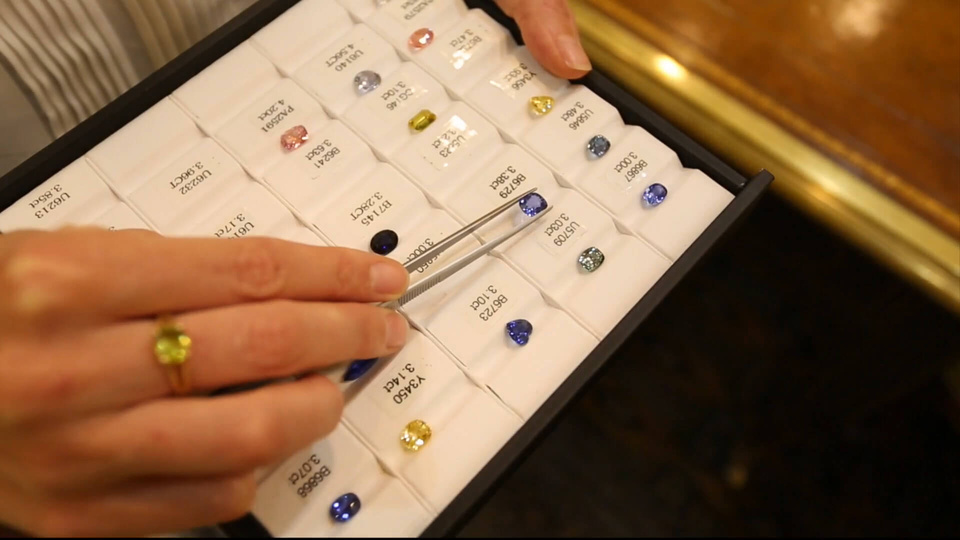


-emeraldcut-blue-topaz-0.7600-cts-k14854-1.jpg?d=750x750&s=ngc&v=20250626045440)

